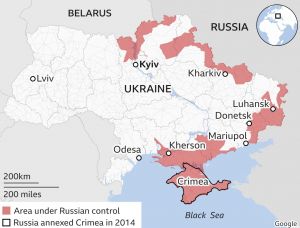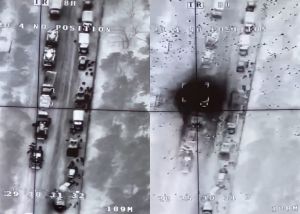[vc_row][vc_column][vc_column_text]Back in the 19th century, the Prussian army (currently Germany) was one of the first armies in the world to adopt wargames as a method to teach officers both basic and complex battlefield tactics. One of the very prominent games at the time was Kriegsspiel. Kriegsspiel was an enhanced game of chess where the chess pieces are replaced with blocks representing real military units (infantry, artillery, etc.) and the board is replaced with a map representing different types of terrain (Desserts, rivers, mountains, etc.).
The game was simple, the players were given similar sets of pieces and then each player would plan their tactics and write down their orders on a piece of paper and give it to the umpire. The Umpire then reads out the orders of each player and moves the blocks across the map accordingly. The results of land capture and battles are decided using mathematical calculations made by the umpire. The game would resume until one player’s army defeats the other.
Kriegsspiel was different than any wargame at the time due to the fact that each player had to plan the entire war blindly and at no point, did they have the right to reverse or issue previously given orders. The game depended on the player’s wit to think ahead of their opponent, stopping their moves and inflicting maximum damage on their army.
Today in the 21st century, Kriegsspiel isn’t relevant anymore it turned into a normal board game you can play with your friends. As by time, the military capabilities of many powerful nations couldn’t be resembled by plastic blocks that you move around a map and the notion of war has evolved to incorporate various fronts that also couldn’t be put on a map. However, what is still very relevant is the player’s wit and ability to plan for wars gaining the maximum and losing the minimum.
As the Russian “Special military operation” in Ukraine enters its 8th day, questions and doubts have been raised around the Russian military capability in this war. From poor planning to poor execution that led to casualties and equipment loss from the Russian army. This article aims at giving an overlook of the Russian army’s performance during the first days of the operation.
The Build-up
Before indulging in detail, a quick comparison between the two armies is important to take into consideration. According to the International Institute for Strategic Studies, in 2021, Ukraine spent $4.7 billion on defense while Russia spent $45.8 billion in the same year. Russia is a nuclear-armed county while Ukraine is not. Russia has around 900,000 active personnel and 2 million in reserve while Ukraine has 196,000 active personnel and 900,000 in reserve, and rest assured the disparity between the armies’ capabilities when it comes to equipment and firepower is as big as you think or even bigger.
According to a British ministry of defense intelligence update, Russia has been preparing for this operation for months as it has been building up its forces on the border with Ukraine. The update stated that almost half of Russia’s combat ability was deployed for this operation. The forces were deployed on the western border of Russia with Ukraine, the Crimean Peninsula, and Belarus. It’s noteworthy that the Russian army is accompanied in this war by forces from the Chechen army and separatist forces from the newly independent states, Luhansk People’s Republic, and Donetsk People’s Republic.

Map Updated: Mar 1.
The map shows the various attacking fronts the Russian army used to launch its offensive.
- The western Russian-Ukrainian border included two fronts, a) advancing west and south from Luhansk and Donetsk b) advancing west towards Kharkiv and Kyiv.
- The second attacking front was from the southeastern Belarusian-Ukrainian border where the Russian forces advanced south towards Kyiv.
- The third front was from the previously annexed Crimea moving north towards Kherson and eastwards to join with the Donetsk and Luhansk forces in capturing Mariupol and blocking Ukraine’s access to the Sea of Azov.
The Game Plan
At the beginning of the operation, many analysts predicted that it would be a matter of days until the Russian army takes over Ukraine however, as the days went by, many speculations were proven wrong. In fact, the Russian army made little progress and was suffering many casualties and several military pieces of equipment were either captured or destroyed.
The Russian plan aimed at a fast smooth entry to Ukrainian cities where they would easily gain control and reach Kyiv with minimum bloodshed and damage to Ukrainian cities, they even called themselves the “Liberators”. The fast wins were expected to be:
- Neutralizing Ukraine’s air defenses.
- Reach Kyiv fast.

© Twitter. Destroyed Russian T-72 tank. Pryluky, Ukraine. Feb 27.
The strategy depended on inflicting as minimum damage as possible to Ukrainian cities and infrastructure, infantry to move deeper in Ukrainian territory to create pockets within the Ukrainian defenses, avoid urban warfare and most importantly don’t engage with civilian resistance and go round if possible. This was shown in several videos of Russian troops stopping movement and not pushing forward when confronted by civilian barricades and resistance.
The Russians, unexpectedly, were faced with strong resistance, and what they thought would take hours took days to accomplish. The Ukrainian army fought a guerilla war that succeeded in inflicting high damage to the Russian army. The defense strategy depended on sudden attacks on convoys using anti-tank missiles and drone attacks that caused very considerable damage. The exact number of casualties varies according to the source, as per the Russian MoD, the Russian army suffered 498 deaths and 1,597 injuries. While the Ukrainian army suffered 2,870 deaths and 3,700 injuries until the night of March 2. On the other hand, according to president Volodymyr Zelensky, the Russian army suffered 6,000 deaths from the beginning of the attack until the night of March 2.
Throughout the first days of the attack, many incidents of arrested Russian soldiers and/or seized Russian vehicles that vary from tanks to trucks were reported. The equipment was either won in battles or sometimes found on the side of roads and highways and other times the soldiers just left after encounters with Ukrainian resistance.
A group of online volunteers has started a campaign to track the losses of equipment and vehicles from both sides, they only count equipment that has a photo or video graphic evidence proving their loss. Until March 2, the count for the Russian equipment lost reached 443 pieces, of which 184 were destroyed, 8 were damaged, 111 were abandoned and 141 were captured. The count includes tanks, Armored Fighting Vehicles, Infantry Fighting Vehicles, personnel carriers, and communication stations.
The Drawbacks
The inability of the Russian military to make significant progress in the first days can be traced back to four main reasons:
- Inability to enforce early air superiority.
One of the key combat goals since the beginning of the operation was to neutralize the Ukrainian air defense systems and enforce complete air superiority over Ukraine. Controlling the air space would have allowed the Russian army to avert many of the damage inflicted and win more ground. The Russian MoD only announced air superiority on February 28, 5 days after the operation started.
- Weak logistic support of food and supplies.
A key enabler to a strong military campaign is the ability to keep a working supply line to your troops as they march further in enemy territory. These supply lines provide water, food, fuel, ammo, and whatever else is needed. In this case, as the Russian troops moved deeper into Ukrainian land, several footage emerged of Russian soldiers looting supermarkets for food and supplies. Also, some of the captured Russian equipment seized by the Ukrainian army was found on the side of the road fully functional but without fuel, they were towed by tractors, fueled up, and now fighting against the Russians.

- Relying on civilian radios and mobile phones for communication.
Fast and secure communication with the command is one of the main pillars for coordinating a military operation to coordinate strikes and transfer information between different units. To everyone’s surprise, the captured Russian equipment showed the Russian soldiers’ utilization of civilian radios and mobile phones that use unsecured radio waves which can be easily tapped. Several accounts on Twitter were tweeting the radio waves used by the Russian troops around them, some have

even recorded hours of radio communication between Russian units and command and posted the audio files on social media. If civilians with basic devices managed to tune in to Russian military waves, one can only imagine how easy it was for intelligence agencies.
- Suffering heavy losses to the Bayraktar TB-2 drones.
The Bayraktar TB-2 drones are Turkish manufactured tactical drones that conduct surveillance and offensive missions. They have been a game-changer for the Ukrainian army defenses as they have inflicted massive damage to several Russian air defenses and convoys.

The Endgame
The Russian offensive has upped its level after the first days of the operation. Now, Russia depends on heavy artillery fire on cities to break their defenses. As a result, several cities started falling under Russian control like Mariupol, Kherson, and very soon Kharkiv (2nd Biggest city after Kyiv). Currently, Vladimir Putin has no way back, only forward. Footages of huge mobilization of the Russian army in support of the current operation have emerged, Russian fighting jets are using the Ukrainian skies freely and different attacking fronts are joining forces especially fronts 2 and 3. Although the Russian army hasn’t been as efficient or organized as many have thought, the Ukrainian army stands no chance even with the west supplies of more Bayraktar drones or anti-tank missiles. Now, Putin is going all-in in this war, with nothing to lose after the economic isolation from the west, Ukraine is a Russian military training ground.[/vc_column_text][/vc_column][/vc_row]

